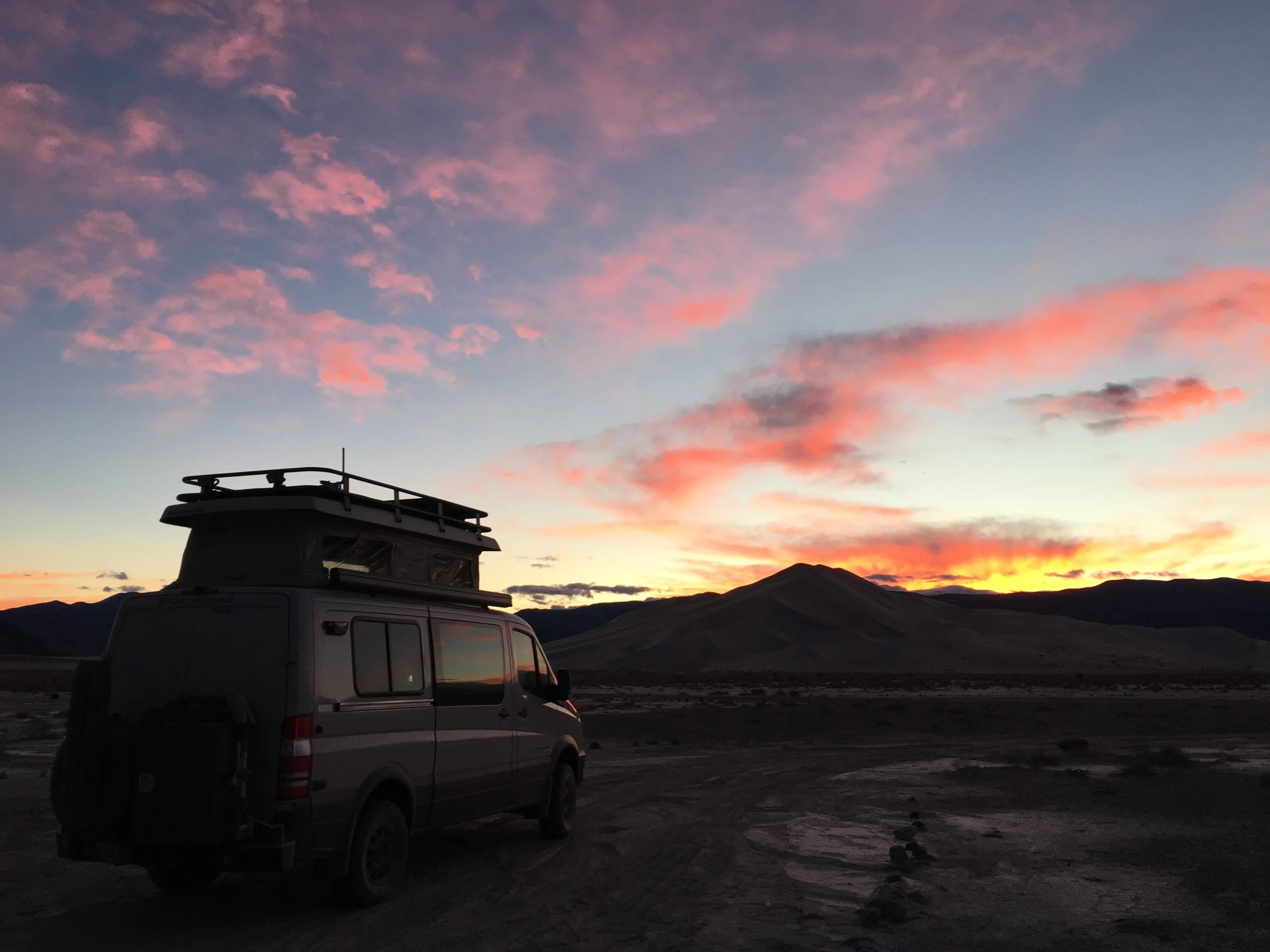Desert Skies
One of the things that many landscape photographers will tell you they dread the most is clear blue skies. As much as they offer incredible pre-dawn light in certain places (such as the coast, or the desert), clear blue skies are, in a word, boring. Which means the skies are often pretty much framed outside of the picture when they’re totally blue. Landscape photographers will opt, hands-down, for partly cloudy skies. Many such as myself will even prefer the soft light of overcast skies. And certainly that is why, in part, we go out in adverse weather conditions. It’s not that we like being wet, or cold, or both, it’s that weather gives us amazing conditions of light and clouds. That’s one reason why Ansel Adams’ Clearing Winter Storm is so amazing. Well, the one thing we really didn’t have during our December adventure was plain old blue skies. That meant that the skies above presented some rather incredible photographic opportunities!
The Sierra skies didn’t wait to tease us with its beauty. Our first night at the Alabama Hills offered us some amazing photographic opportunities ranging from dynamic formations . . .
to simply lovely backgrounds for images . . .
to abstract compositions.
And as if we didn’t get the point, the morning essentially told us it could match the sunset . . .
and then decided to change things up once, by fading into blue, . . .
and then a second time 10 minutes later by intensifying into an inferno.
No doubt about it, the skies at the Alabama Hills were jaw-dropping.
While it took Death Valley a couple of days to let us know what it was capable of, on our second morning there it gave us a taste of what it could offer.
That evening Death Valley showed us what it could do by orchestrating an opera above the Ibex Dunes.
Then it seemed like Death Valley wanted to toy with us. It started by first showing us what was possible at the Eureka Dunes . . .
but then depriving us of an equally brilliant morning by an early morning mass of blocking clouds in the east. However, Mother Nature later brought the clouds back over the dunes to give us options for our compositions.
You’ve got to admit, the Rolling Stones do have a point - you sometimes get what you need.
The stunning skies didn’t end there though. On our way out of Death Valley we were gifted one last opportunity to create a sky image. At our stop by the retired quartz mine, I looked up, and much like a similar image I made at the Painted Hills looking into the sun, an image struck me. To steal from Ansel, “It was proof that the subject may prompt ideas, ideas crave visualizations, and craft make their realization possible.” I immediately knew I had an image, if only I could record it correctly.
And that was it. By the time we hit Bishop we were blanketed in clouds, and further north, weather. But we had our images. We even had some spots of amazing sky on the way home, but by then we were too concerned with making it home before nightfall, so we would point out to each other particularly stunning clouds every now and then. Sometimes it’s enough to simply admire them!
PS: No color saturation sliders were cranked up in the making of this blog post. In fact, saturation was not changed at all. In other words, yes, this is how intense the colors in the skies were.










